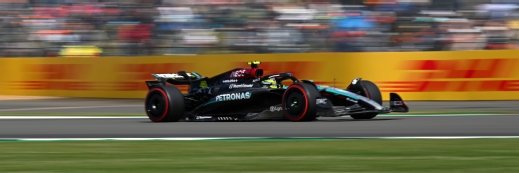Red Bull ramps up network for 2014 F1 championship
An extended relationship with AT&T will support RedBull Infiniti Racing on and off the track as it prepares its 2014 championship bid
An extended relationship with AT&T will support RedBull Infiniti Racing on and off the track as it prepares its 2014 championship bid.
The 2014 F1 season kicks off on Sunday 16 March. Red Bull has dominated the sport for the past four years, but new regulations have rewritten the rulebook.
More than ever, technology will play a crucial role in the development of a championship-winning car. RedBull Infiniti Racing’s new network is 2.5 times bigger than the one it used last year, providing richer data and connectivity to its wind tunnel in Bedford.
Through AT&T’s super-fast network, the team can support each other and carry out work more efficiently, maximising on-track time during practice sessions. The network enables them to transfer higher-quality data back and forth from the UK HQ to the trackside, including 3D visuals of the car. The team are reporting data speeds four times faster than they experienced previously.
Data from first races will be critical in 2014
Alan Peasland, head of technical partnerships at RedBull Infiniti Racing, says: "The 2014 car is a completely new animal. The first race is a massive test, and it's in Australia, on the other side of the world."
After this race, the team will travel straight to Malaysia, so any changes to the cars will need to made at the racetrack, rather than back at its base in Milton Keynes. "The first half of this season will be a massive learning curve – data [from the cars] will be crucial," says Peasland.
The technology behind winning an F1 championship
- Red Bull Technology deploys 3Par for resilient F1 data access
- Photos: F1 - The wind beneath Red Bull's wings
- Red Bull Racing keeps its cars on track with Teamcenter
This data analysis will enable the team to compare real data while the cars are driven round the track with virtual data and wind-tunnel data. "F1 is a data sport," adds Peasland.
The F1 regulations limit physical testing at the track, headcount versus external spend, and the total amount of aerodynamics activity. The rules allow the teams to decide the split between computational fluid dynamics (CFD) and wind-tunnel testing.
There are 100 sensors on each car, all measuring 10 lines of information. "Over a race weekend, 100 GBytes of data will be sent back to the factory in real time," says Peasland. A reliable network is therefore crucial.
"We need to really understand the car," he adds. "Every part of the business needs to be fast. We need very fast systems and robust infrastructure. If the network failed, it would cause major problems."
Data is crucial to getting the cars round the track in the fastest possible time. The AT&T network also enables real-time collaboration between the factor and Viry, which makes the Renault engines that power the racing cars. Up to 100 GBytes of engine data is transmitted over the AT&T network, providing a link between the experts on track, the factory and the Renault engineers.
As the car is in constant development and parts may be shipped directly to the team at the next race, the AT&T network enables race team engineers to access CAD geometry and the Siemens product lifescycle management system to check how new components are fitted.
Simulations during the race weekend are run on RedBull Infiniti Racing’s supercomputer, which runs CFD virtual wind-tunnel software.
F1 practice sessions are about optimisation. The team correlate the HPC data from virtual wind-tunnel simulations, live data while the car is on track, plus engine data from Viry (Renault) to get the very best from the car. Video showing which race lines other drivers take on track is also fed back to the drivers, allowing them to see whether they can shave a millsecond off their lap times. During race day on Sunday, the AT&T network is used to provide live strategy support.
Data analytics drives turn-by-turn strategy
Such real-time communication between the engineers in Milton Keynes and the engineers at the track can make the difference between winning a championship and being the runner-up.
During the final Grand Prix in Brazil in 2012, Sebastian Vettel needed to finish in third place to win the championship, but after a collision on the first lap, he ended up in last place.
With the help of the AT&T network capabilities, the team were able to react quickly and assess the impact on the car’s performance, sending instructions directly to the track ahead of the first pit stop.
"We needed to check if the right suspension was damaged," says Peasland. Telemetry data from the car was transmitted in real time back to the factory in the UK, where it was analysed. If Vettel had pulled his car into the pits, the race would effectively had been lost and the championship would have been handed to Ferrari and driver Fernando Alonso.
Instead, the Red Bull operations room assessed stills taken from TV footage of the crash along with data from the car’s telemetry. “The data showed it was OK to stay out,” says Peasland.
The JPEG from the video still showed Vettel’s engine had a dent in its exhaust. “If the dent turned into a crack, it would damage the engine,” says Peasland. Thanks to the data analysis run by the operations team, the car was rebalanced at the next scheduled pit stop.
By lap 63, Vettel was in sixth place. He was told he no longer needed to push the car so hard and finished the Brazil GP in sixth, winning the world championship with 281 points from Alonso on 278.









